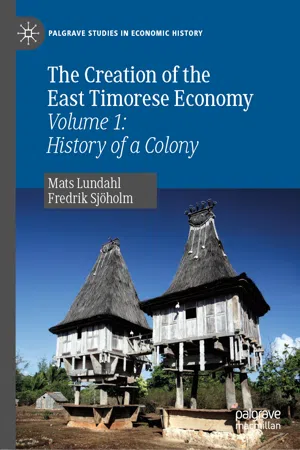In the beginning, in Macassar, in the island of Celebes, there lived a very old crocodile who, when he did not manage to catch the fish at the beach, ventured ashore to hunt dogs or pigs since hunger was killing him. He attempted but did not obtain anything. Going back, the road was long and the sun was burning the crocodile who, feeling that his strength was beginning to wane, judged that he was going to die in the road like a stone. A boy who pitied the old crocodile approached him and helped him to get back to the beach. The crocodile was very grateful and offered to carry the boy back to his own coasts as long as he wanted to go back through the waters of the rivers and the sea. Later, however, hungry again, without dog or pig, the crocodile decided to eat the boy, after consulting the animals with respect to his intention. All of them, from the whale to the monkey, accused him for being ungrateful. Feeling uncomfortable, the crocodile decided to go back into the sea, carrying the boy, swimming in search of the lands where the sun rises. Tired by his effort he tried to go back, but his body became immobile and was quickly transformed into stone and soil and it grew until it became a large island. The boy walked on the back of the island, around it, and he called it (East) Timor.1
The above is one of the innumerable versions of the myth of how Timor was created 2—the island depicted as a crocodile. East Timor is a geographically small nation: around 15,000 square kilometers, including the Oecusse enclave and the islands of Ataúro and Jaco,3 slightly larger than Connecticut, or about half the size of Belgium. Across the island runs a chain of inactive volcanic mountains, the highest peak of which is almost 3000 meters above the sea level.4 The topography in general is hilly and steep with narrow valleys between the mountains and just a few narrow plains. Seasons alter markedly, with a western monsoon from Asia that brings rain and fertility between late November and April, followed by a southeastern monsoon from Australia beginning in May and extending into July that prolongs the rainy season on the southern coast and even more so in the central mountain range. This is followed by a dry and hot season extending to next November.5 The northern coast is comparatively dry, while the southern coast receives a lot more rain. Most of the vegetation on the island is scrubby and meager, except in the uplands, and the quality of the soil varies considerably.6 ‘Instead of being luxuriant like the vegetation in Inner Indonesia, the vegetation of most parts of Timor resembles that of northern Australia,’7 and, like most non-volcanic tropical soils, the soils of East Timor are not highly fertile.8
Within this setting, the history of East Timor would unfold.
An obvious question when faced with the task of providing an account of the history of Timor is: What did Timorese society look like at the time of the first European visits to the island? ‘Little is known … [of] Timor’s pre-colonial history,’ writes
Yvette Lawson laconically.
9 It is virtually impossible to paint a reliable picture:
For most former colonies, recorded history starts with the beginning of the nation’s colonization by a European power. Inevitably, such histories are largely a record of European intrusion, exploits and experiences. Thus, in the case of East Timor, the Portuguese records and historical accounts … [and their] descriptions of Timorese society and kingdoms merely provide a shadowy background to the story of Portuguese colonization and Portugal’s historic ‘civilizing mission’. To describe what Timorese society was like at the time and the real impact of European intrusion is therefore a near impossible task. Even to piece together the sketchy accounts of the more perceptive and sensitive intruders is both difficult and inconclusive.10
The following will have to be read precisely in this spirit.11
The Peopling of Timor
Even the peopling history of Timor is uncertain. The earliest date of human settlement in Timor has been pushed backward during the last few decades. On the basis of the archaeological evidence available at the end of the 1960s, writing in 1971, Ian Glover concluded that ‘Timor was occupied before … [11,500 BC] by a small population of hunter-gatherers, exploiting at least the inland mountain zone of the island, the current earliest date for coastal occupation being … [around 5,500 BC].’12 At the time, no deposits older than 13,500 years had been excavated, and practically no skeletal remains had been discovered.13 The Indonesian occupation of East Timor 1975–1999 made archaeological investigations impossible for a quarter of a century. However, in 2000, excavations began at the Lene Hare cave in the Lautém district at the eastern tip of the island. The shell...
